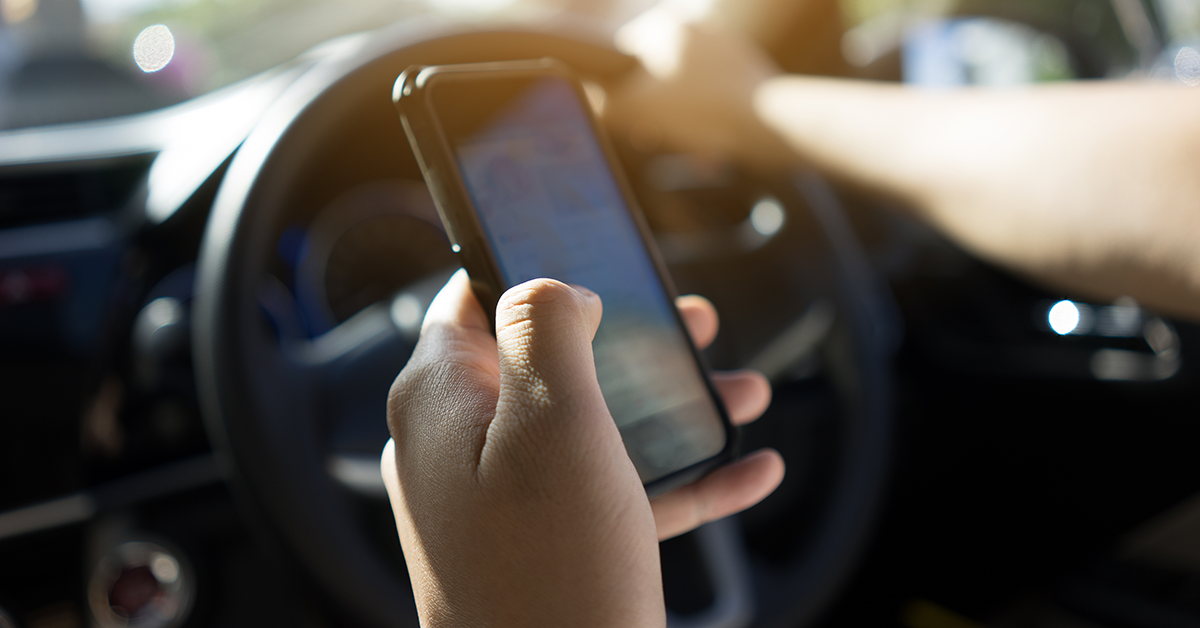Don’t Drive Intexticated
Don’t Drive Intexticated

Whether it’s texting, calling, navigating, or something else, using your cellphone while driving can be dangerous. In fact, texting and driving can have the same consequences as drinking and driving: deaths and injuries. Help reduce the number of these preventable tragedies by putting down your phone—because lives depend on it. You don’t drive intoxicated, so don’t drive intexticated.
AAA Western and Central New York reminds drivers about the importance of focusing on the road ahead and not on their smartphones during National Distracted Driving Awareness Month.
“Drunk driving now has a stigma attached to it – that’s why AAA is reminding drivers, ‘don’t drive intoxicated, don’t drive intexticated.’ With more than 3,100 people killed in distracted driving crashes each year, it is time for drivers to be accountable. If we all make the effort to put the phone away when driving, we can save lives,” said Anthony B. Spada, President & CEO, AAA Western and Central New York.
According to the National Highway Traffic Safety Administration (NHTSA), in 2019 distracted driving crashes killed 3,142 people in the U.S., an average of 9 deaths per day. That number was up 10 percent from the year before (2,839 deaths in 2018). In New York State alone, 110 people died in 2019 as a result of distracted driving.
Drivers who text when behind the wheel more than double their odds of being involved in a crash.
“Mobile and smartphones are a way of life, but when driving on the roadways you may take a life by answering a text or using social media,” advised Trooper James O’Callaghan, Public Information Officer, New York State Police, Troop A. “Help make our roads safe by keeping your eyes on the road and not on your phone.”
The New York State Police report an uptick in distracted driving incidents, including tickets and crashes despite less traffic during the pandemic.
Research by AT&T shows attitudes toward the dangers of distracted driving are softening. More than 95% of those surveyed consider smartphone distracted driving to be dangerous, but 9 in 10 people admit to doing it anyway. The research also shows that 7 in 10 drivers say their smartphone has become essential for getting around. Video watching, video chatting, and playing games while driving doubled compared to six years ago, and more than 30% of drivers have admitted to doing at least one of the actions while behind the wheel. The smartphone activities drivers dangerously conduct behind the wheel are: reading texts, emails, or social media (68%); typing texts, emails or social media posts (60%); watching videos/view pictures (54%); playing games (38%) and other activities.
Distracted driving remains a growing traffic safety problem according to the AAA Foundation for Traffic Safety’s 2019 Traffic Safety Culture Index. The survey found most drivers (96 percent) believe typing or reading on a hand-held cellphone while driving to be very or extremely dangerous, but 39 percent admit to reading and 29 percent admit to typing on a smartphone at least once while behind the wheel within the last month.
“Even if drivers perform some of these tasks while parked, or stopped at a red light, once you start moving, and even after you stop using the technology, your mind is still not fully focused on the task of driving for up to 27 seconds. This is a dangerous situation that could lead to inattention blindness, where you’re looking at the road but not seeing what’s in front of you, putting other drivers, bicyclists, and pedestrians at risk,” added Elizabeth Carey, Director of Public Relations at AAA Western and Central New York.
AAA encourages all motorists to eliminate distracted driving by following these tips:
• Put it away. Place your mobile device out of sight to prevent temptation.
• Know where you’re going. If using a navigation system, program the destination before driving.
• Pull over. If you must call or text while on the road, pull off the road safely and stop first.
• Ask passengers for help. If riding with someone, seek their help to navigate, make a call or send a message.
• Be a good passenger. Speak out if the driver of your vehicle is distracted.
• Don’t be a distraction. Avoid calling or texting others when you know they are driving.
• Activate Do Not Disturb. This feature on your phone will prevent calls from coming in while you’re driving.
• Everyone should prevent being intexticated. Just as drivers need to pay attention, so do pedestrians and bicyclists. Never call, text or play games while walking or cycling.
This is the fifth year of AAA’s distracted driving prevention initiative titled “Don’t Drive Intoxicated. Don’t Drive Intexticated.” The goal of the multi-media initiative is to remind drivers that the consequences of both alcohol-impaired driving and smartphone use behind the wheel could be the same - crashes that result in deaths and injuries.
To learn great driving habits from AAA's pros, visit AAA Driver Training.